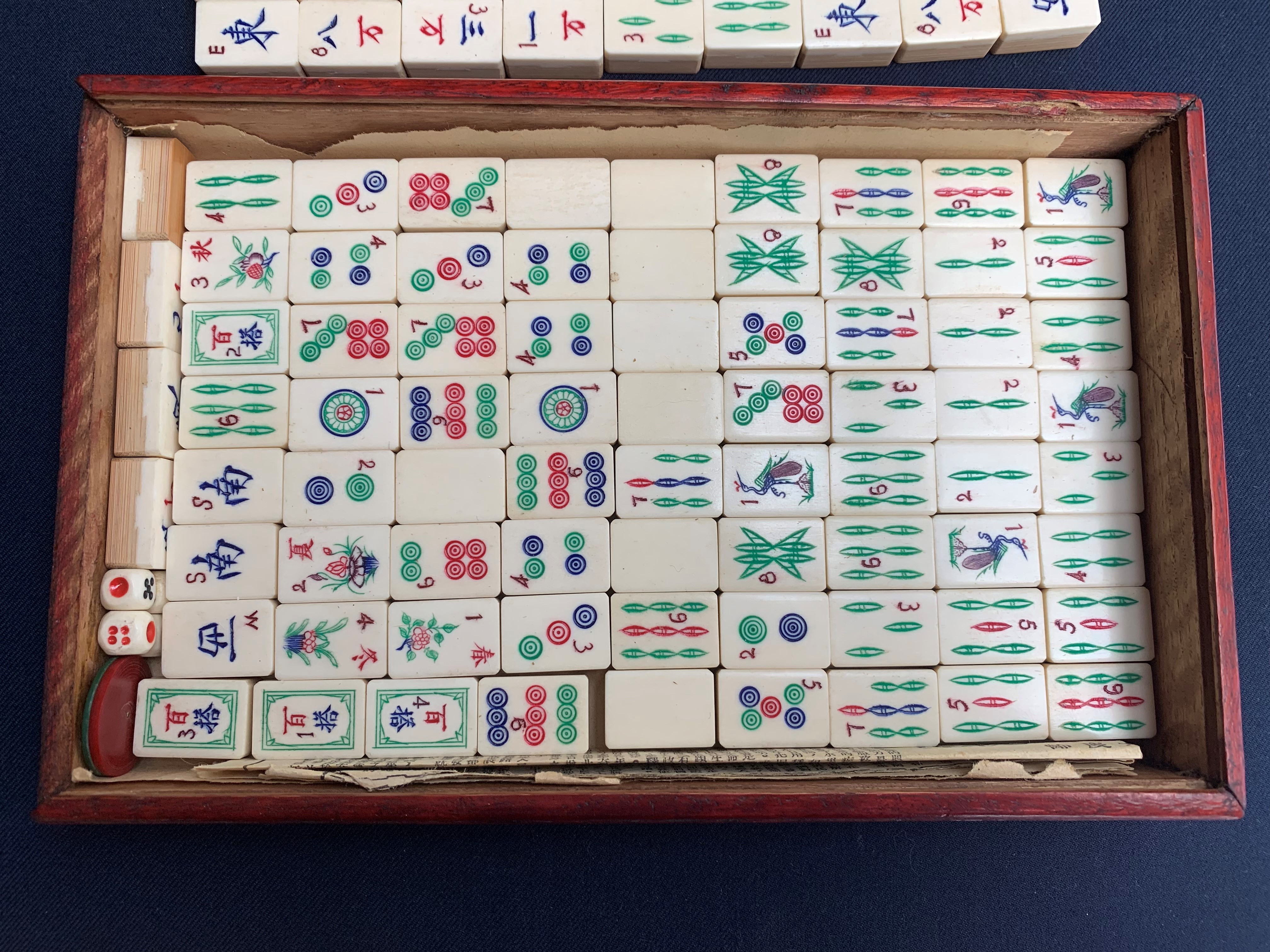
Hawk #1 there are 152 tiles, 148 ones are original to the set. I have two hawk on Globe Bam CB sets and one pillow CB set for sale, altho I have not put up the photos yet.

However, we may receive a portion of sales if you purchase a product through a link in this article.From time to time I will be selling items from my own collection, and sets from other collectors as well. We only include products that have been independently selected by Elite Daily's editorial team. Whether you're new to the game or an experienced player, investing in one of these mahjong sets will help to keep the integrity of the centuries-old Chinese game alive. Other sets give context to the historical roots of the game and also support artisans. One of the versions listed is sold by the first Chinese American department store in the world, while another is handcrafted by a father-daughter team based in Hong Kong. Below, you will find more than a handful of products that maintain the traditional characters, symbols, design, and overall cultural significance of the game. If your goal is to play mahjong in a way that's true to its culture and history, you don't have to purchase a trendy set that ignores the importance of the game's origin. (For reference, a traditional mahjong set is available for purchase via for $59.) Elite Daily reached out to The Mahjong Line for comment regarding potential plans to change its "modern" concepts, but did not hear back at the time of publication. Using words like ‘refresh’ were hurtful to many and we are deeply sorry.”Īt the time of publication, The Mahjong Line continues to sell its Minimal Line sets at $325 and its Cheeky Line and Botanical Line sets at $425 with no changes in design, nor mention of future changes. While our intent is to inspire and engage with a new generation of American mahjong players, we recognize our failure to pay proper homage to the game's Chinese heritage. American Mahjong tiles have evolved for many decades and we'd like to be part of this evolution in the most respectful and authentic way possible. Our mission is to combine our passion for art and color alongside the fun of the game while seeking to appeal to novices and experienced players alike. 5, The Mahjong Line released a statement on Instagram, as well as on its website, apologizing: "We launched this company in November of 2020 with pure intentions and a shared love for the game of American Mahjong, which carries a rich history here in the United States.

(This information has since been removed from The Mahjong Line's About Us page.)Īfter the internet backlash, on Jan. There’s even a playing mat available inscribed with phrases like “ Get Your Mahj On” and “Not Your Mama’s Mahjong.” LaGere's reasoning for this “refresh," per the company website, was because the traditional artwork on the tiles “did not reflect the fun” she had when playing the game with her friends. Mahjong quickly spread among players with different backgrounds as well, including the American Jewish population in New York City in the 1950s.įast forward to 2020, the founders of The Mahjong Line - who have no apparent cultural connection to the game - decided to give this centuries-old pastime a "modern refresh." Bright designs such as skylight blue-colored tiles with random symbols like the word "BAM" written out in English and bags of flour replaced traditional Chinese symbols - such as bamboo and flowers, respectively - from the original version of the game.

It was introduced to the United States in the 1920s by American tourists and business owners, and gave Chinese American players the opportunity to bond while playing. The founders of The Mahjong Line, Kate LaGere, Annie O'Grady, and Bianca Watson, were accused of whitewashing the tile-centric game, which originated in China in the 1800s, and was popularized in the Chinese cities of Beijing and Shanghai, based on a 2013 Stanford University report on the history of the game. 4, three white women were accused of appropriating Chinese culture after the launch of The Mahjong Line, a company that aimed to give a "modern makeover" to the traditional Chinese game of mahjong. A recent instance of cultural appropriation made waves in the gaming industry, and the internet was quick to call it out.


 0 kommentar(er)
0 kommentar(er)
